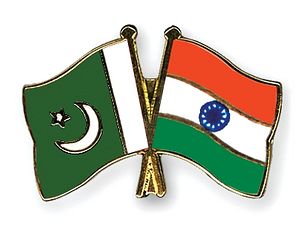India and Pakistan celebrate their independence days from Britain on August 15 and August 14 respectively. While both countries technically became independent on the stroke of midnight on August 15, Pakistan decided to celebrate earlier to differentiate itself from India. This week marks the 67th anniversary of the departure of the British from British India.
It is instructive to note the different paths India and Pakistan have taken since independence. Although India and Pakistan have similar histories, climates, and cultures, their divergent paths go to show the role of governance and ideology in shaping societies. Pakistan today suffers from chronic instability and internal violence, is prone to coups, fails to protect minorities and has lethargic economic growth. Pakistan is currently experiencing massive protests aimed at getting rid of Prime Minister Nawaz Sharif’s democratically elected government before it completes its term. Ironically, Pakistan’s army may be the only institution holding the country together. Nawaz Sharif’s Independence Day speech lacked vision and focused mostly on the need for democracy and the rule of law in Pakistan and the resolution of the Kashmir dispute with India. This is indicative of the basic problems that Pakistan must first overcome before developing more substantially.
On the other hand, India has for the most part been a stable democracy under the rule of law since its independence. While there have been slight bumps along the road, India’s overall trajectory seems to be in a direction of stability and economic growth. Communal tension and the lack of development remain some of India’s biggest blemishes but there is a general consensus that these problems are manageable and will disappear over time in India.
Indian Prime Minister Narendra Modi’s Independence Day speech reflected this view of India. While mostly upbeat, it also contained pleas for Indians to take action to solve India’s many problems. Modi urged young people to avoid resorting to terrorism or Naxalite violence and called for a ten year moratorium on caste and communal violence. Modi also spoke about the need for society to take greater measures to protect and value women. This included a strong condemnation of female infanticide and rape.
On the other hand, Modi promised to take India forward economically. He invited the world to invest and manufacture in India, promising a win-win situation for Indians and foreign companies. Additionally, Modi announced the creation of a scheme to help the poorest get bank accounts. The participation of India’s population in a formal industrial economy would be a sure way for India to develop economically and overcome some of the errors of past governments in India. Finally, in a positive development that marks a definite break from India’s past, Modi announced that the antiquated economic planning commission would be scrapped. Instead, a new institution will be set up in its place, which will focus on “creative thinking on public-private partnerships, optimum utilization of resources, and giving direction to state governments.” The new institution, according to Modi, will be “an organization that will strengthen federalism and more.”
Prime Minister Modi is the first Indian Prime Minister to be born after India’s independence. As a result of this and his background, he is less bound to old conventions and ideas than his predecessors – he looks to the future for inspiration and not just the past. This point was also made by India’s (ceremonial) President Pranab Mukherjee who said that India was “a modern nation of modern dreams.”
Modi’s idea of India is of a vibrant, spontaneous, entrepreneurial, self-confident India, one that is proud of its culture and one that embraces all of its teeming masses and not just the elite. This is likely the India of the future and the India of popular aspiration, however distant this may seem. This is not exactly the idea of India that many of its past leaders and founders had but it builds off of and aggregates many of the principles of figures such as Mahatma Gandhi, Sardar Vallabhbhai Patel, Subhas Chandra Bose, B.R. Ambedkar, Vinayak Savarkar, and even Jawaharlal Nehru, while giving their ideas a Modian twist. However, on the other hand, Pakistan is still struggling to fulfill the dream of its founder, Muhammad Ali Jinnah. Upon the independence of Pakistan, Jinnah stated:
You are free; you are free to go to your temples, you are free to go to your mosques or to any other place or worship in this State of Pakistan. You may belong to any religion or caste or creed – that has nothing to do with the business of the State…. Even now there are some States in existence where there are discriminations made and bars imposed against a particular class. Thank God, we are not starting in those days. We are starting in the days where there is no discrimination, no distinction between one community and another, no discrimination between one caste or creed and another. We are starting with this fundamental principle: that we are all citizens, and equal citizens, of one State.
Rather, Pakistan has regressed from these principles. As Prime Minister Sharif noted, Pakistanis “must first reclaim [their] country from the forces of darkness and obscurantism,” before Jinnah’s vision could be fulfilled, which included, according to Sharif, “the right to vote for [one’s] own future.”
































